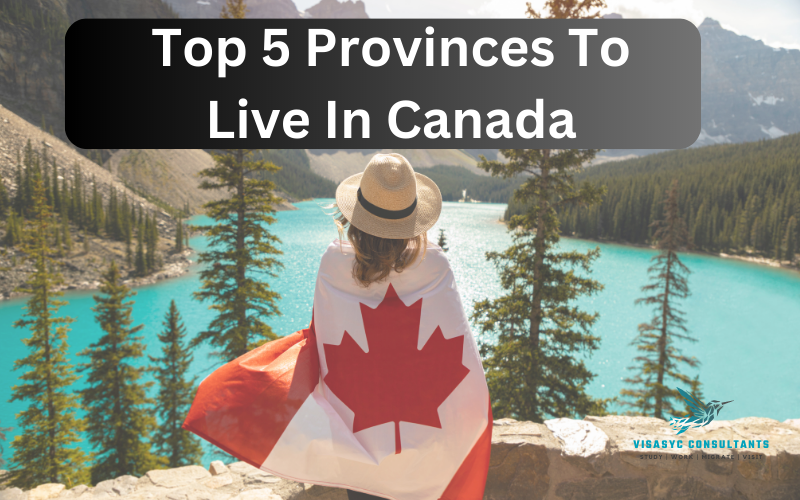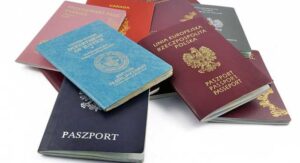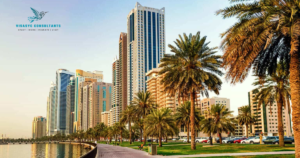Table of Contents
ToggleWhy is Canada so special?
Canada is one of the most well-known countries in the world. With nearly 9.8 million square kilometres, this is the world’s second-largest country in terms of land area.
It is larger than Australia, Brazil, India, China, the United States, and many other countries combined.
Canada is a really unique country that is home to nearly 37 million people of all ages, cultures, genders, and religions. In the majority of recent surveys and research, Canada has consistently been ranked as one of the most popular places for individuals to migrate to in the globe.
several immigrants choose to relocate to Maple Leaf Country for environmental reasons, but this is only one of several.
After all, the country is known for its stunning flora and fauna, breathtaking natural beauty, guaranteed safety and security, a stable economy, high-quality healthcare, outstanding education, and diverse employment prospects.
It has several nicknames, the most common of which is The Great White North.
The suffix “Great” refers to the country’s status as the world’s second-largest. The name “North” refers to the country’s location, which is in the far north of North America.
Best Province In Canada To Live And Work
The “White” refers to the fact that the country is covered by at least 40% of Arctic frozen tundra, and there is snow in practically every section of the country.
The Great White North is home to several major cities, including Toronto, Montreal, Vancouver, and Ottawa. Most of the time, immigrants find it difficult to pick between all of Canada’s cities and provinces because each has something unique to offer.
Whether it’s the environment, climate, nature, livability, or employment options. Here’s a list of all of them to help you decide which is the finest province in Canada to live and work in.
1. Ontario
The province of Ontario is the most favoured destination for newcomers. Ontario has a population of 14.5 million people and is located in the centre of Canada.
Toronto is the capital and largest city, as well as the most populated city in the country, with over 6 million residents. Toronto and New York are frequently compared since they have many similarities. Toronto is an economic powerhouse that attracts many head offices for various Canadian corporations. Some of Ontario’s other major cities include:
- Ottawa
- Mississauga
- Brampton
- Hamilton
- London
- Markham
The province is renowned as Canada’s economic heart for its magnificent parks, economic growth, natural diversity, modern service, enormous woods, and wildlife.
As it is home to individuals from all over the world, the province is home to many different cultures.
The unemployment rate is only 6.8%, and on average, Ontario citizens earn the highest wages in the country.
The average hourly wage is $27.50, and the annual salary can be around $53,625. Because of Ontario’s high level of living, at least 250 000 people who visit Canada each year eventually become permanent citizens.
The average price of a house in Ottawa is $403.000, while it is slightly more in Toronto at $635.900. In addition, Ontario is home to two world-class research facilities.
Some of Ontario’s universities, like Queens University, the University of Toronto, the University of Western Ontario, and York University, are among the greatest in the world and have received international recognition.
Some of the notable landmarks in Ontario include:
- CN Tower (in Toronto)
- Horseshoe Falls (near St. Catharines)
- Algonquin Provincial Park (near Ottawa)
- Royal Ontario Museum (in Toronto)
- Casa Loma (in Toronto)
- Rideau Canal (in Ottawa)
- Skylon Tower (close to St. Catharines)
- Ripley’s Aquarium of Canada (around Mississauga)
2. Quebec
The average price of a house in Ottawa is $403.000, while it is slightly more in Toronto at $635.900. In addition, Ontario is home to two world-class research facilities.
Some of Ontario’s universities, like Queens University, the University of Toronto, the University of Western Ontario, and York University, are among the greatest in the world and have received international recognition.
Some of the notable landmarks in Ontario include:
- Gatineau
- Saguenay
- Sherbrooke
- Troi-Rivières
- Saint-Jean-sur-Richelieu
Living in Quebec, whether in a big or small town, is less expensive than in other provinces. The average rent in Toronto is $1.463, whereas it is $877 in Montreal. It is the greatest and most reasonable option for students who have recently relocated away from home.
Tuition rates are among the lowest in the country, and universities such as Université de Montréal, McGill University, Université Laval, and Université de Sherbrooke are located there.
In Quebec, you may observe the following landmarks:
- Montmorency Falls (close to Quebec City)
- Fairmont Le Château Frontenac (in Quebec City)
- Mount Royal (in Montreal)
- Old Quebec (in Quebec City)
- Notre-Dame Basilica of Montreal (in Montreal)
- Montreal Botanic Garden (in Montreal)
- Gatineau Park (in Ottawa)
- Mont Tremblant Resort (around Montreal)
- La Citadelle de Québec (in Quebec City)
3. British Columbia
This is the westernmost province, bordered by the Pacific Ocean. The interior of British Columbia is rugged, with diversified terrain and coastline islands.
It’s ideal for mountain climbers and bikers, skiers and kayakers, and everyone who enjoys outdoor activities and experiences.
British Columbia has a population of 5 million people and is Canada’s second-largest province, with an area of approximately 925.186 square kilometres. The capital of British Columbia is the charming town of Victoria, which offers a variety of winter sports, horse-drawn carriage rides, and other attractions.
The largest city is Vancouver, a dynamic cosmopolitan.
It features some of the most spectacular vistas because it is nestled between the Rocky Mountains and the Pacific Ocean.
Aside from Victoria and Vancouver, other major cities in British Columbia include Kelowna, Abbotsford, Nanaimo, Kamloops, and Chilliwack, all of which have populations of over 100,000 people.
British Columbia is without a doubt one of Canada’s most appealing provinces.
Not just in Canada, but all across the world. Its main city, Vancouver, has been on numerous lists of the finest cities to live in.
The province boasts a good level of living, a diversified culture, and a rich cultural history.
In addition to being safe, there are several educational and employment options in agriculture, health, manufacturing, construction, and forestry.
One disadvantage of living in British Columbia is the high cost of living.
All of the costs might add up to $2,500 each month.
Property taxes are around $3.900, and the average money required to live there annually is approximately $80.000.
Tuition prices are quite high in Vancouver, which is one of the most expensive cities to live in. Private colleges, for example, may charge annual fees of around $30.000.
Vancouver Island University, University of the Fraser Valley, The University of British Columbia, and Simon Fraser University are among the most popular universities in British Columbia.
Some of the landmarks that can be seen in British Columbia are:
- Stanley Park (close to West Vancouver)
- Capilano Suspension Bridge (in North Vancouver)
- The Butchart Gardens (near Victoria)
- Emerald Lake (around Calgary)
- Yoho National Park of Canada (around Calgary)
- Granville Island (in Vancouver)
- Gastown (in Vancouver)
- Kootenay National Park (near Calgary)
- Whistler Blackcomb (close to Vancouver)
4. Alberta
With over 4.3 million citizens, Alberta is one of the three prairie provinces in Canada. Just like British Columbia, it is nearby the Rocky Mountains and it’s a famous destination for outdoor sports and activities such as hiking or skiing. The capital of Alberta is Edmonton.
It is full of rich history, culture, and many festivals such as the Edmonton Folk Festival. Calgary is the largest town in the province. It frequently hosts the famous Calgary Stampede which showcases the cowboy culture of the province.
Besides Edmonton and Calgary, the other large cities in Albert are:
- Red Deer
- Lethbridge
- St.Albert
- Medicine Hat
- Grande Prairie
One of the greatest ways to characterise Alberta is as a massive mash-up of many things like road trips, monuments, and little communities.
The Calgary Stampede, which takes place during the summer, is one of the province’s most prominent features.
It’s packed with entertainment, including food, drinks, concerts, rodeos, and rides. Alberta has an extremely mild climate.
Although it is adjacent to the Rocky Mountains, unlike British Columbia, it is not close to the Pacific Ocean.
Summers are gorgeous and pleasant, while winters can be as chilly as -20 to -40 degrees, especially early in the year.
Some of the landmarks that can be seen in Alberta are:
- Banff National Park of Canada (close to Calgary)
- Jasper National Park of Canada (near Edmonton)
- Fairmont Banff Springs (close to Calgary)
- Athabasca Glacier (near Red Deer)
- Peyto Lake (around Red Deer)
- Lake Louise (near Calgary)
- Moraine Lake (around Calgary)
- Maligne Lake (near Edmonton)
- Lake Minnewanka (near Calgary)
5. Manitoba
Manitoba is a province in western Canada.
For over 6000 years, it has been home to Métis and Aboriginal people.
The north of the province is made up of arctic tundra and rock, which is why it is so wild.
Manitoba has a population of 1.3 million people.
Winnipeg is the capital and largest city. Aside from Winnipeg, the other major cities that contribute to Manitoba’s allure are:
- Brandon
- Steinbach
- Thompson
- Portage la Prairie
- Winkler
- Selkirk
Manitoba is a land full with welcoming, safe, and clean towns that provide an enriching way of life.
It’s one of many natural beauty locations in Canada, and it’s extremely reasonable.
Manitoba is only 150 kilometres from Canada’s border with the United States.
There are numerous work prospects, as well as excellent schools and institutions that provide an excellent education and healthcare.
Because of the number of neighbouring lakes, the province is often referred to as the “Land of Lakes.” Manitoba, in comparison to the other major provinces, is fairly affordable.
The annual costs (including housing, taxes, electricity, and insurance) can be around $25.000.
In Manitoba, you may see the following landmarks:
- Riding Mountain National Park (near Winnipeg)
- Canadian Museum for Human Rights (in Winnipeg)
- Assiniboine Park (in Winnipeg)
- Assiniboine Park Zoo (in Winnipeg)
- The Forks (in Winnipeg)
- Whiteshell Provincial Park (around Winnipeg)
- The Manitoba Museum (in Winnipeg)
- FortWhyte Alive (in Winnipeg)
- Wapusk National Park (near Churchill)
Conclusion
The remaining Canadian provinces are:
- Nova Scotia
- New Brunswick
- Newfoundland and Labrador
- Prince Edward Island
They are all stunningly lovely and majestic, particularly Prince Edward Island, which is favoured by those seeking a more peaceful existence away from the big towns.
Because Canada is right adjacent to the Pacific Ocean, most of the provinces enjoy extremely breathtaking scenery.
Furthermore, it features some of the most abstract natural vistas in the entire planet.
What each province has in common is an abundance of outdoor sports and adventures such as hiking, skiing, mountain climbing and riding, fishing, and so on.
The weather in any city might be highly diverse.
The northern part of Canada is noted for its frigid environment and difficult winters. Temperatures might range from 0 degrees Celsius to -20 or even -40 degrees Celsius.
Places like Vancouver and other western cities have a more temperate climate that gives warm and hot weather for the most of the year. Temperatures in these areas can range from 20 to 40 degrees Celsius.
For the past few years, the Canadian government has worked hard to improve education, job prospects, economics, and healthcare in all Canadian provinces.
Each province has a distinct “Canadian” appearance.
If you enjoy cosmopolitan cities and a lavish lifestyle, Toronto and Vancouver are the finest places to live in Canada because they are the most costly.
Most cities in Quebec, such as Drummondville, Sainte-Marie, Rouyn-Noranda, Rimouski, Bécancour, and Sept-Îles, are ideal for residents who desire to live in a tranquil and affordable setting.
Then there are cities like Ottawa, Calgary, and Saskatoon, which may provide both serenity and a variety of possibilities.
In conclusion, it is safe to state that Ontario, Quebec, and British Columbia are unquestionably the finest provinces in Canada to live and work in, owing to the fact that life is considerably easier and citizens have access to hundreds of various career options.




